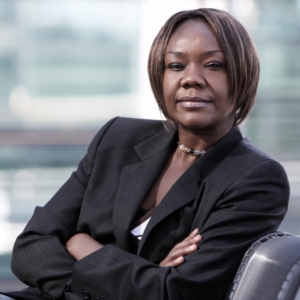 by Aimee Hansen
by Aimee Hansen
Systemic racism is exemplified in cumulative and insidious ways in our everyday interactions, and we often do not even see it.
Noam Shpancer Ph.D. speaks to the importance of identifying the “true character of American racism,” in Psychology Today, as “a systemic feature of our social architecture, interwoven into the collective fabric by way of myriad traditions, legacies, laws, myths, institutions, and habits.”
This means identifying that an “overtly oppressive ideology” is embedded in our culture and within each of us. We are complicit in racism because it is insidious to the culture that formed and influences our self-concept and worldview.
Implicit Bias and Internalized Racism
Shpancer describes that racism has gone from being habituated (no longer registering what we are used to), to internalized (integrated into self-concept, including the oppressed taking on the oppressor’s sense of values), to becoming learned helplessness (the repeated frustration that neutralizes sense of agency), to falling into confirmation bias (selectively perceiving affirmation of what we already believe to be true, and dismissing what disproves it).
“Once it’s been habituated to, internalized, and allowed to shape our habits and perceptions, the oppressive ideology has in effect coopted us into perpetuating it,” writes Shpancer.
Microaggressions Are “Death By A Thousand Cuts”
In 2007, social scientist researchers called microaggressions “the new face of racism.” They position the dominant culture as the norm and perpetuate disapproval, discomfort and aberrance of marginalized groups.
Derald Wing Sue, professor of psychology at Columbia University and author of the book Microaggressions in Everyday Life, states in Fast Company, “Racial microaggressions are the brief and everyday slights, insults, indignities, and denigrating messages sent to people of color.”
Though often unintentional, microaggressions have “the impact of highlighting a person’s ‘difference’ from the majority represented group.” They are especially toxic because they appear neutral or positive to the speaker themselves, while reinforcing thinly veiled stereotypes and associations held by culture and that person.
For example, commenting that an African-American woman is “articulate” reflects that you did not expect her to be. Saying “your name is hard to pronounce” standardizes white names. Claiming to “not see color” is a microinvalidation of systemic racism that makes life more difficult because an individual is black, and discounts implicit bias. Other examples of microaggressions include telling an Asian-American woman she speaks English well, assuming two people need to meet just because they are LGBTQ+ or yet another manterruption while making a point in a meeting.
“It feels like death by a thousand cuts,” says HR expert, Avery Francis, who created a 10-slide presentation on microaggressions often experienced by black women that went viral. “[Microaggressions] really chip away at your self worth, and it’s harder because the instances seem so small.”
“Because of their somewhat ambiguous nature, microaggressions come with an added layer of emotions,” says psychologist Dr Samantha Rennalls, “They can be confusing, sometimes leaving the recipient with a sense of uncertainty about why they are feeling hurt or offended.”
Renalls shares that, “Long-term exposure to microaggressions has been associated with symptoms of depression and anxiety, possibly due to the impact that they have on self-esteem and/or the way in which one may feel powerless to challenge them.”
“In our research, we find that the impact of microaggressions are cumulative, causing major psychological harm,” Sue said.
Making Microaggression Visible
Confronting microaggressions is difficult because of how subtle and innocuous they can appear, because the microaggressor will often feel innocent in intention and because the recipient herself can have an unclear feeling about the interaction.
“…it is important to understand that a lot of times people who engage in microaggressions will not believe that what they said was racist or sexist or homophobic,” says to psychology professor Kevin Nadal, “…and we’re all human beings who might commit microaggressions.”
The conversation must be navigated from a growth mindset for the possibility of awareness of bias and its impact to be made conscious. One suggestion Nadal makes is to ask, “What do you mean by that?” Another suggestion is to ask, “Where do you think that was coming from?”
This can provide a moment for the microaggressor to stop and consider their words. This can even lead to them realizing they are unintentionally perpetuating racism.
According to Sue as written in CNN, a “microintervention” must consider the two levels of a microaggression: “One is the conscious communication of the initiator, which was likely intended to be a surface-level compliment. Then there’s the unconscious metacommunication, which is the message the microaggression sends.”
Sue suggests three ‘artful’ strategies for confronting microaggression, as an ally:
- Making the invisible, visible – make the nature of the behavior visible to the perpetrator
- Educate the perpetuator – shift the focus from the intention (in which harm was not often consciously intended) to the impact and how it can cause pain
- Disarm the microaggression – steer the conversation away from a comment or remark to disarm the energy in the moment
If you’re the recipient of microaggression, power dynamics might make this dangerous or emotionally-depleting. One option is to enlist an ally of equal position to the perpetrator to confront the behavior.
If you’re confronted for your own microaggression, it’s important to be open to listen to the pain expressed and learn from this moment with a growth mindset.
The more we can navigate with empathy and compassion, the more we can consciously alter the power dynamics that have perpetuated systemic racism.
Aimee Hansen is a freelance writer, frequent contributor to theglasshammer and Creator and Facilitator of Storyteller Within Retreats, Lonely Planet-recommended women’s circle retreats focused on self-exploration and connecting with your inner truth and sacred expression through writing, yoga, meditation, movement and ceremonies.

